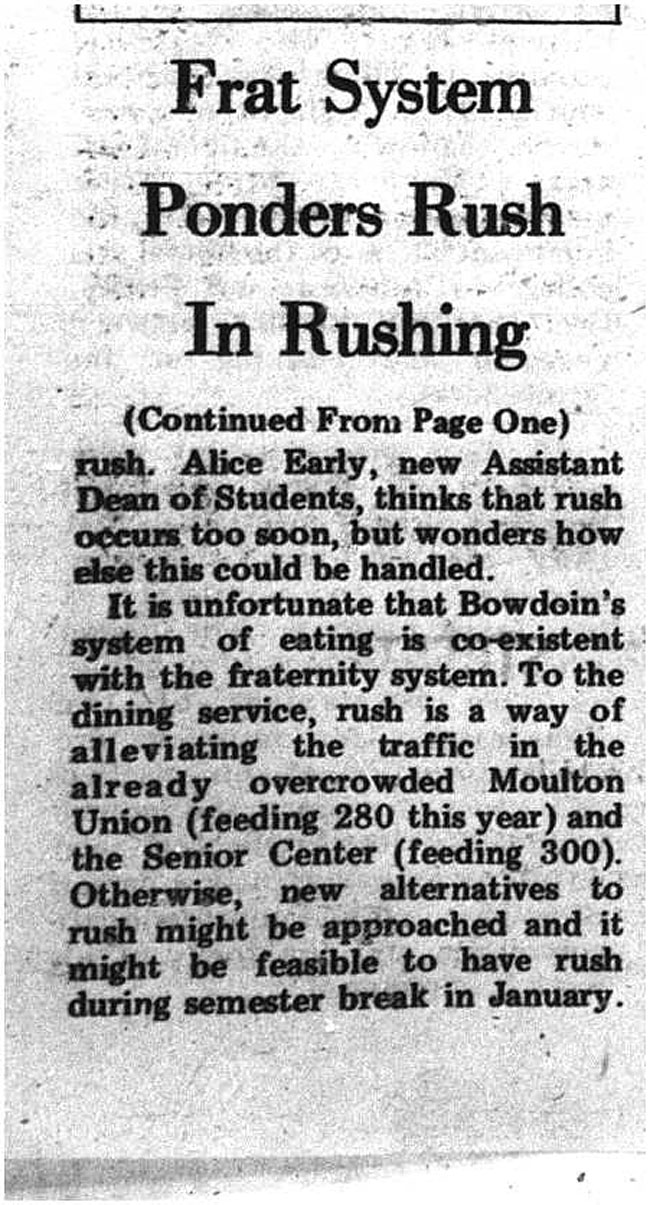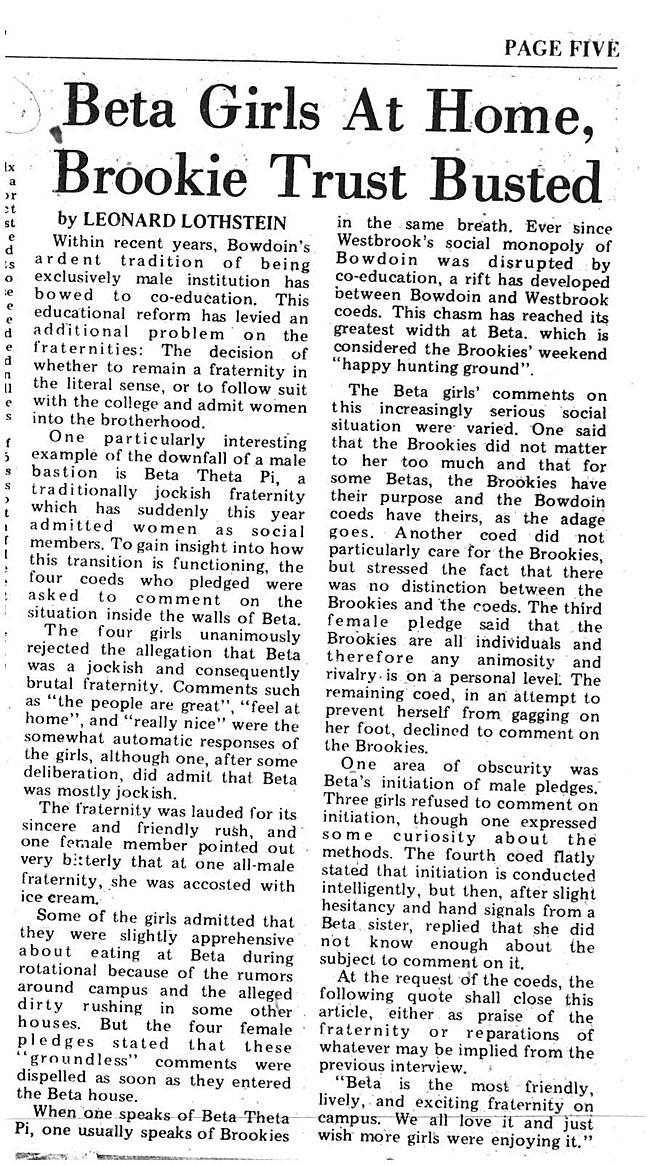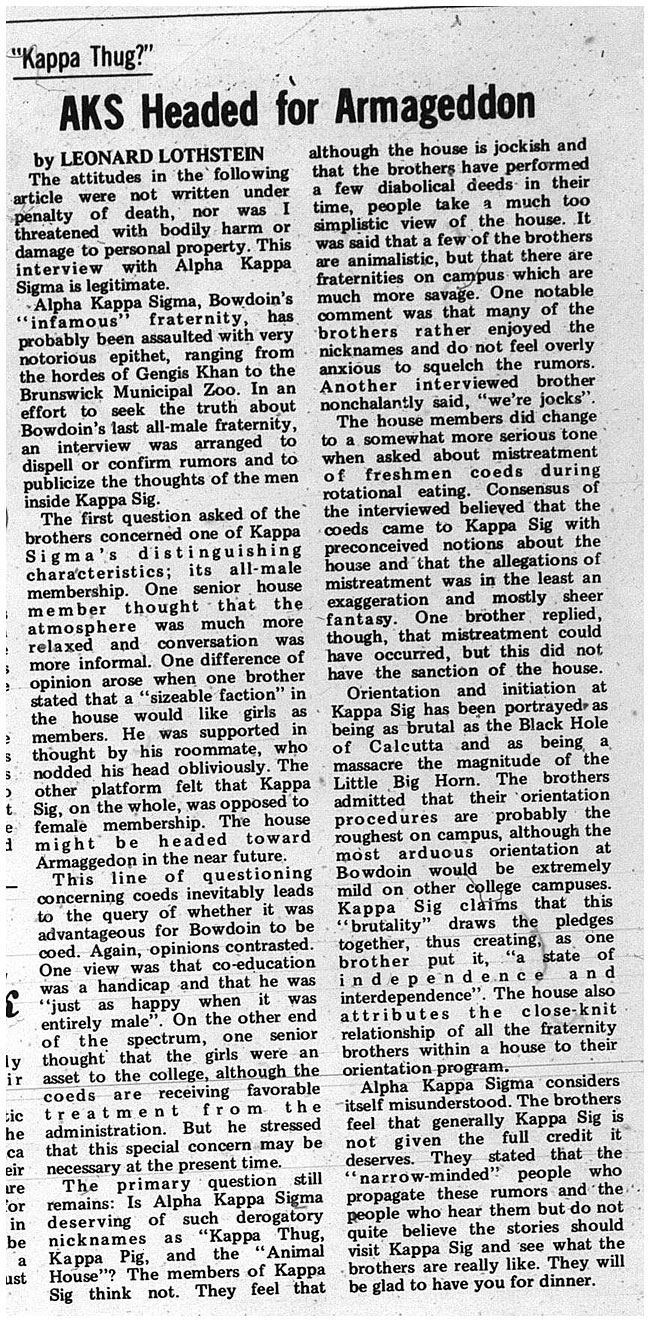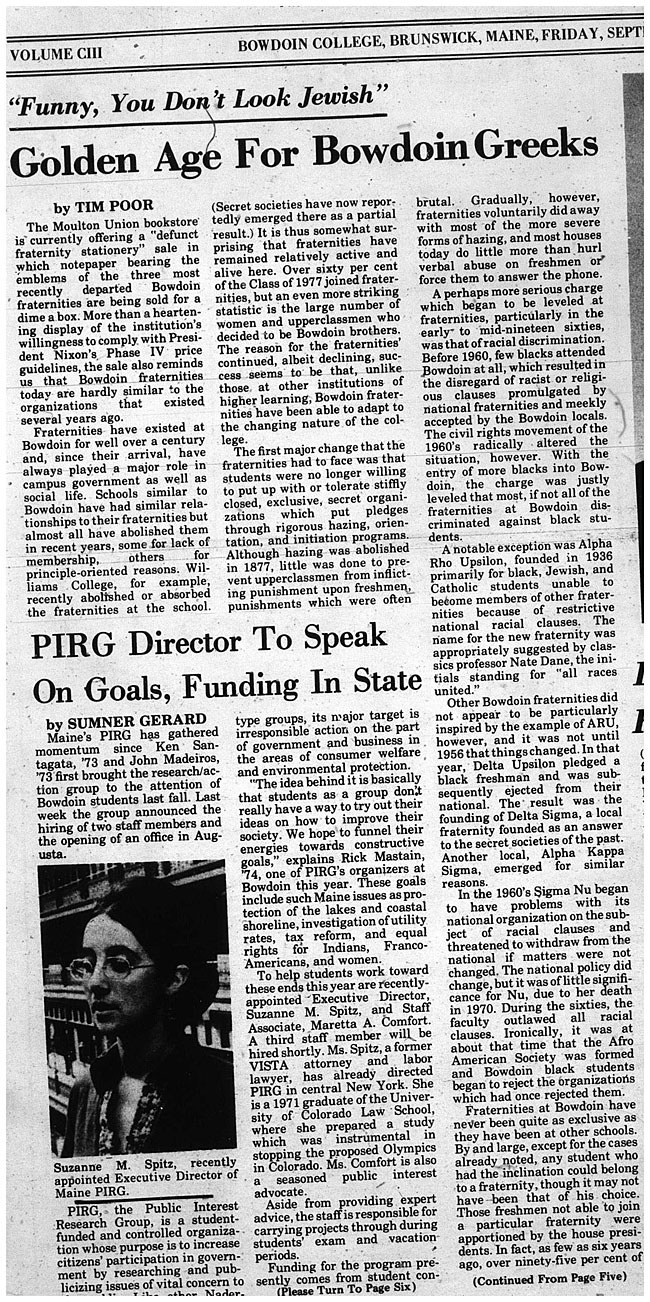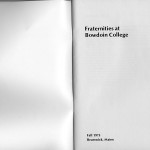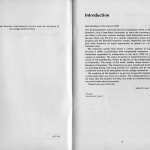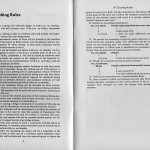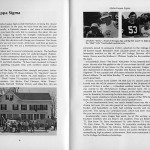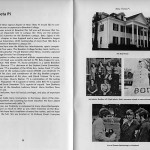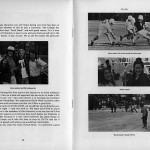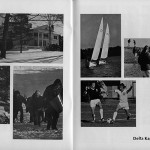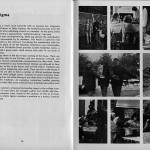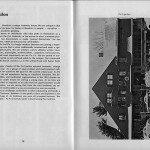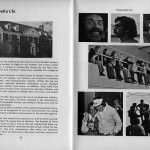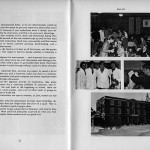On September 22, 1972 the college’s student newspaper, The Bowdoin Orient, printed an article regarding the 1972 fall fraternity rush (Document SS, 45). The article details the number of new students who pledged the different houses as well as issues with that year’s fall rush. The article states that 54% (196) of the freshman class were involved in rush with 36% (29) of the freshman women and 60% (167) the freshman men participating. Of the nine fraternities, only two did not admit women in any capacity.
The article says that “Bowdoin [was] in a somewhat touchy transitional stage,” and attributes it to several things, including the advent of coeducation. Problems with rush stemmed in no small part from the presence of women on campus and increasing class size. Along with twenty cases of dirty rushing, the primary problem was dining. Bowdoin dining was dependent on the fraternities, and the fraternities’ dining facilities, because the dining halls could not accommodate the entire student body. Since the student body grew through the inclusion of women, and not many women rushed, the dining halls were stressed.

